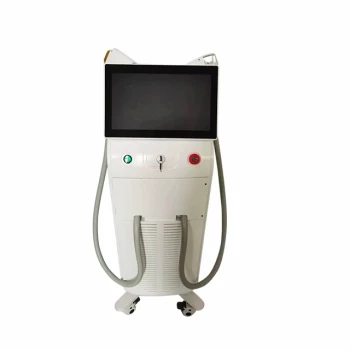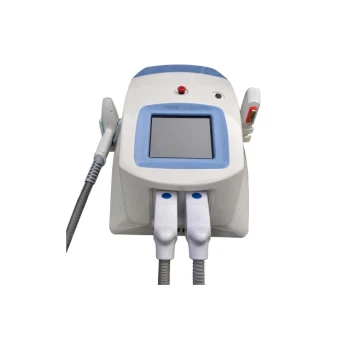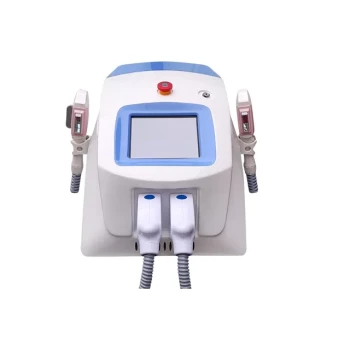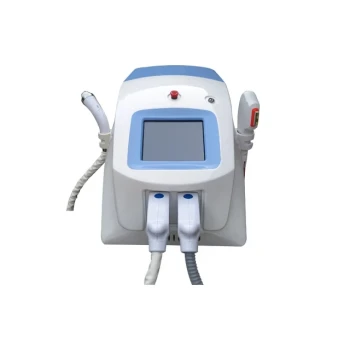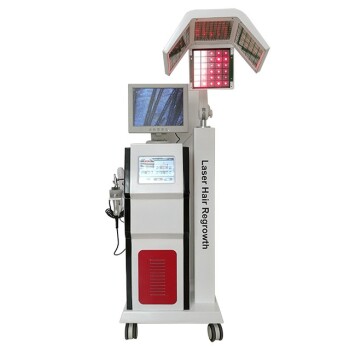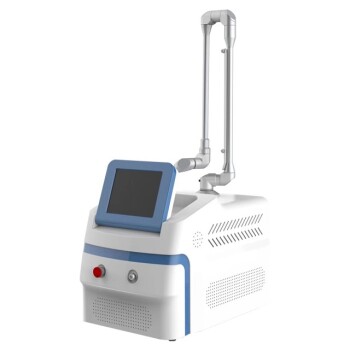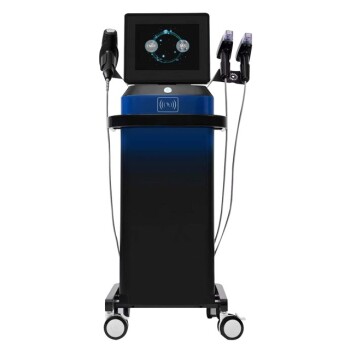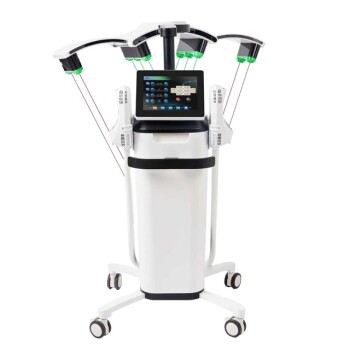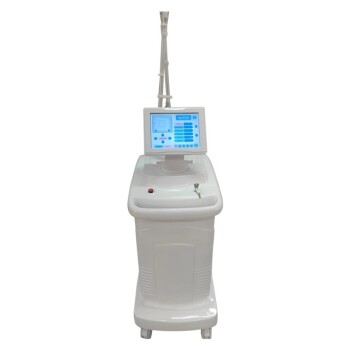In short, no. Performing laser hair removal every two weeks is not recommended. This frequency is too high, which significantly reduces the treatment's effectiveness and can compromise the safety of your skin.
The core principle of laser hair removal is to target hair follicles during their active growth phase. Spacing treatments too closely together means the laser has no new, active follicles to target, making the sessions ineffective and a waste of money while preventing your skin from fully recovering.
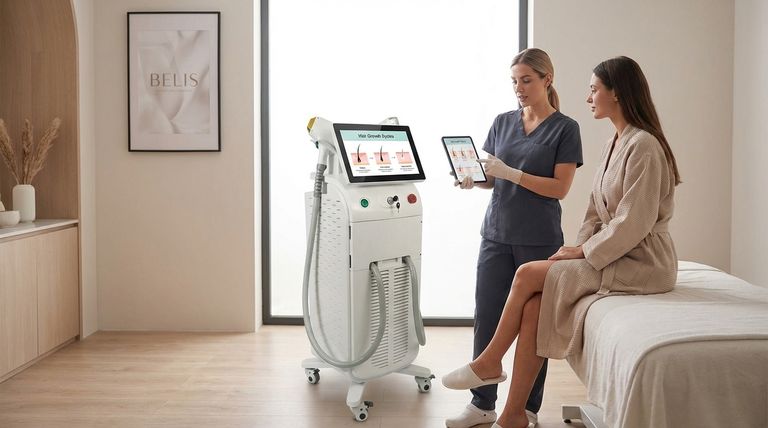
Why Timing is Everything in Laser Hair Removal
To understand why the standard 4-6 week interval is so critical, you need to understand the fundamental process of how hair grows and how the laser interacts with it.
The Three Phases of Hair Growth
All the hair on your body cycles through three distinct phases: Anagen (active growth), Catagen (transition), and Telogen (resting). These phases are not synchronized across all follicles; at any given time, a percentage of your hair is in each phase.
The Target: The Anagen (Active Growth) Phase
Laser hair removal is only effective on hairs that are in the Anagen phase. During this active growth stage, the hair is physically attached to the follicle, creating a direct pathway for the laser's energy to travel down the hair shaft and destroy the cells responsible for regrowth.
The Problem with a 2-Week Interval
When you receive a treatment, the laser targets all the hairs currently in their growth phase. The hairs in the transition or resting phases are unaffected. It takes several weeks for a new set of hairs to enter the active growth phase.
Treating every two weeks means you are repeatedly targeting an area where no new, active follicles are ready. You are essentially treating skin that has not had enough time to cycle new hair into the targetable growth phase.
The Risks of Overtreatment
Rushing the process doesn't just waste your money; it also introduces unnecessary risks by not giving your skin adequate time to heal between sessions.
Compromised Effectiveness
The primary consequence of a two-week interval is ineffectiveness. You are paying for a session that has a dramatically reduced chance of permanently removing hair, which ultimately prolongs the entire process.
Increased Risk of Skin Irritation
Laser treatment is a powerful procedure that applies thermal energy to your skin. The standard 4-6 week interval allows your skin to fully recover. Shortening this healing window can lead to cumulative irritation, prolonged redness, swelling, and increased sensitivity.
Wasting Time and Money
Each session costs money. By scheduling treatments before a new cycle of hair is ready to be targeted, you are paying for a procedure with virtually no benefit. Adhering to the correct schedule ensures every treatment is as effective as possible.
The Optimal Treatment Schedule
The universally accepted timeline for laser hair removal is designed to align with your body's natural hair growth cycles for maximum impact.
The 4-6 Week Standard
For most areas of the body, waiting at least four to six weeks between treatments is the standard. This timeframe provides the best balance, allowing a new crop of hair to enter the Anagen phase so the laser has a fresh set of targets.
Why Different Areas Have Different Timings
You may notice slight variations in recommended timing based on the treatment area. Facial hair, for example, often has a shorter growth cycle, so treatments might be scheduled every four weeks. Body areas like the back or legs have longer cycles, so your technician may recommend waiting six to eight weeks.
Making the Right Choice for Your Goal
Always follow the guidance of a qualified and experienced laser technician. They will assess your specific hair and skin type to create the most effective plan.
- If your primary focus is the fastest possible results: Understand that "fastest" means being most effective. Adhering to the 4-6 week schedule ensures each session provides maximum hair reduction, leading to completion in the fewest effective treatments.
- If your primary focus is safety and skin health: Allowing the recommended time between sessions is non-negotiable. This gives your skin the necessary period to heal completely, minimizing the risk of irritation or other side effects.
- If your primary focus is the best value for your money: Sticking to the proper schedule is the only way to ensure you are not paying for ineffective treatments. Patience in this process directly translates to financial efficiency.
Trusting the science of hair growth cycles is the key to achieving the smooth, hair-free skin you want.
Summary Table:
| Aspect | 2-Week Interval | 4-6 Week Interval (Recommended) |
|---|---|---|
| Effectiveness | Very Low (No new active follicles) | High (Targets new growth phase) |
| Skin Safety | High Risk (Irritation, sensitivity) | Safe (Adequate healing time) |
| Value | Wastes Money (Ineffective sessions) | Cost-Effective (Maximizes results) |
Achieve Optimal Results with Professional-Grade Equipment
Unsure about the right treatment schedule for your clients? Partner with BELIS, a specialist in professional medical aesthetic equipment. We provide clinics and premium beauty salons with the advanced laser technology and expert guidance needed to deliver safe, effective, and profitable hair removal services.
Let us help you build a reputation for excellence and safety. Contact our experts today for a consultation on the best equipment for your practice.
Visual Guide

Related Products
- Diode Tri Laser Hair Removal Machine for Clinic Use
- Trilaser Diode Hair Removal Machine for Beauty Clinic Use
- Clinic Use IPL and SHR Hair Removal Machine with Nd Yag Laser Tattoo Removal
- Clinic Diode Laser Hair Removal Machine with SHR and Trilaser Technology
- Diode Laser SHR Trilaser Hair Removal Machine for Clinic Use
People Also Ask
- What is the best gap between laser hair removal sessions? The 4-6 Week Rule for Optimal Results
- Does laser hair removal tighten your skin? The Truth About Collagen and Hair Removal
- What is the best way to remove hair from sensitive areas? A Guide to Pain-Free, Irritation-Free Results
- How to get the most out of laser? Maximize Your Hair Removal Results Safely
- Who is not suitable for laser hair removal? A Safety Guide to Assess Your Candidacy
